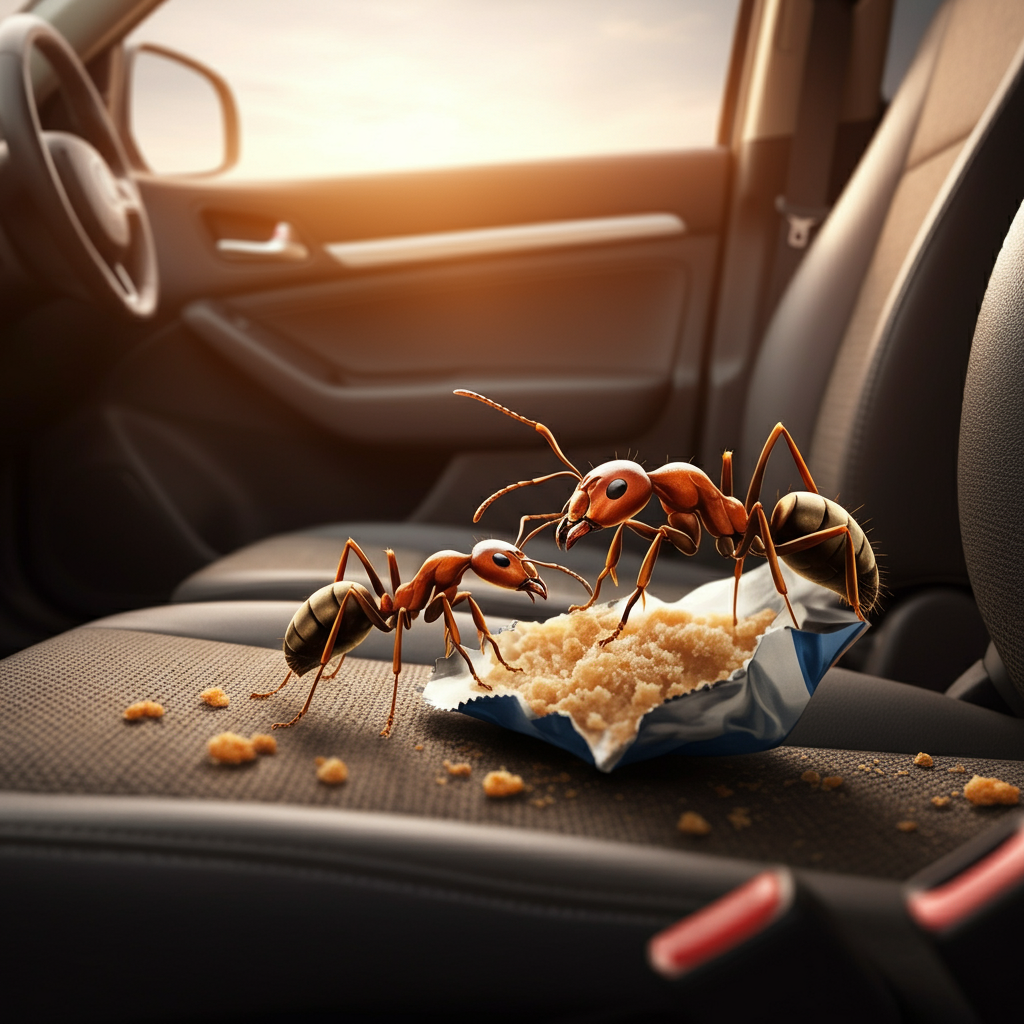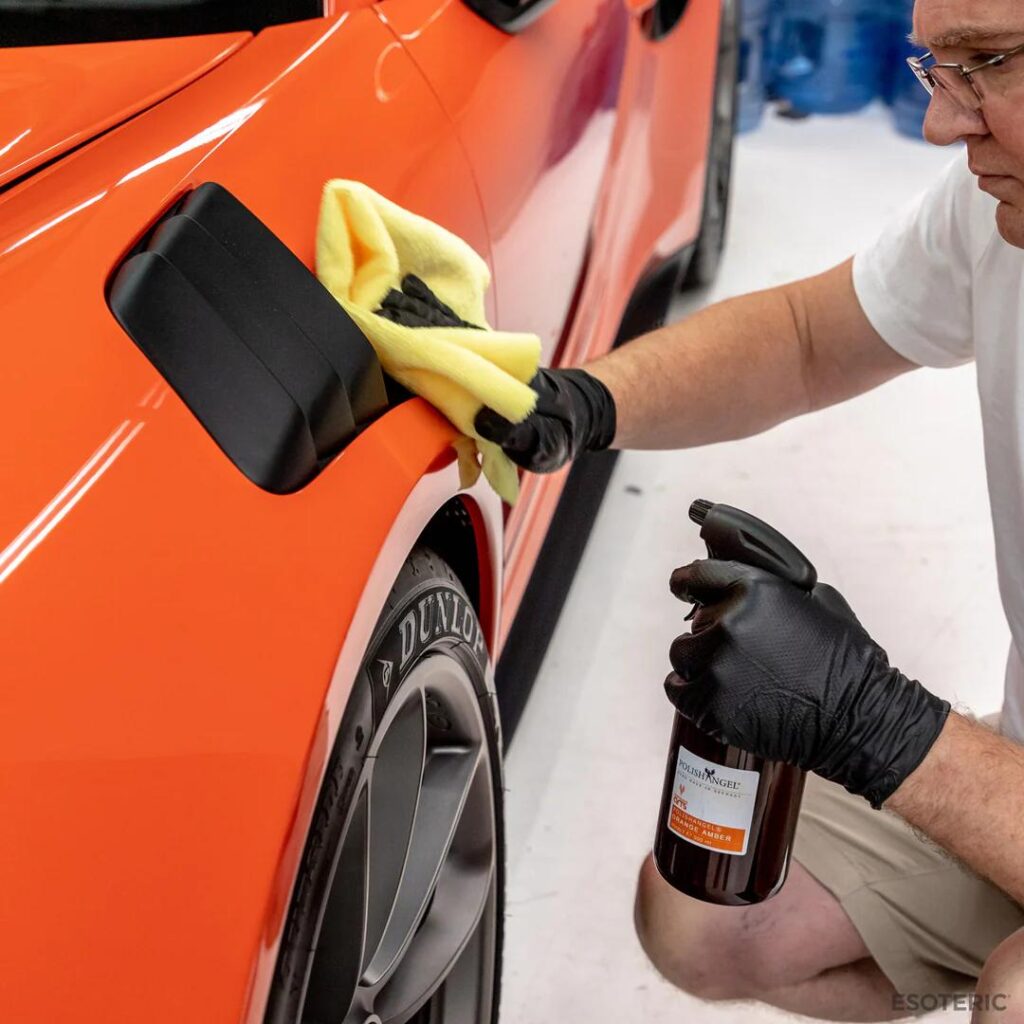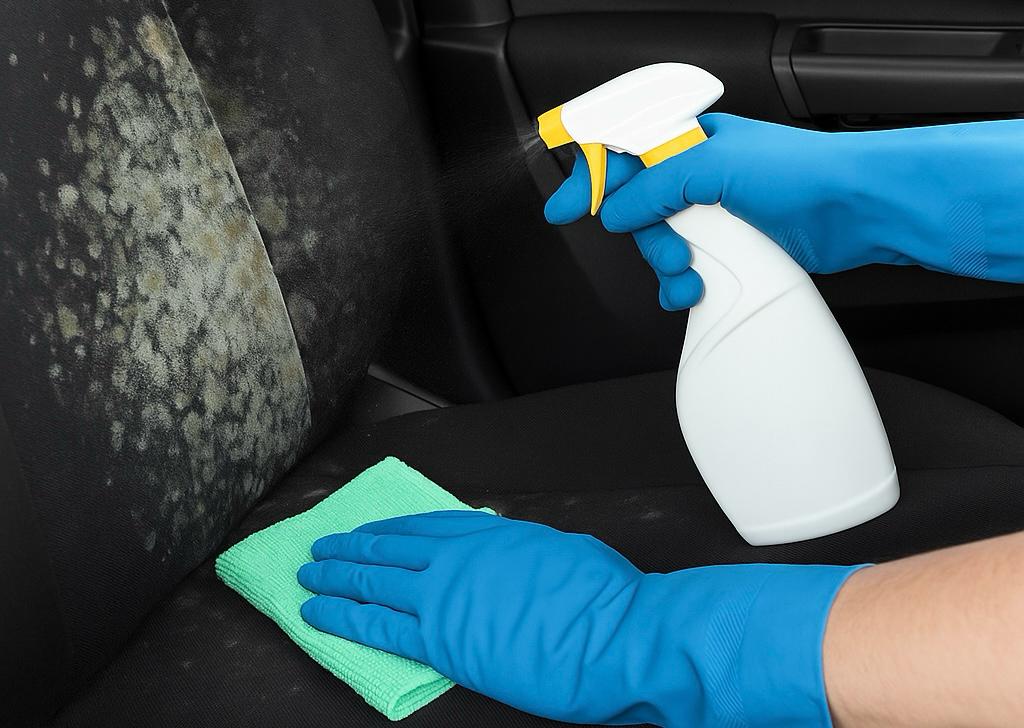As an Amazon Associate, I earn from qualifying purchases
Finding ants crawling across your dashboard or marching along your car seats can be both frustrating and concerning. These tiny invaders don’t just appear out of nowhere—they’re drawn to your vehicle for specific reasons and can quickly establish themselves if not addressed promptly.
Ant infestations in cars are more common than you might think. Your vehicle provides an ideal environment for these persistent pests, offering shelter, potential food sources, and even moisture. Left unchecked, a few scout ants can quickly turn into a full colony, making your daily commute unpleasant and potentially damaging your car’s interior.
The good news is that removing ants from your car doesn’t require expensive professional services or harsh chemicals. With the right approach and a bit of persistence, you can eliminate these unwanted passengers and keep them from returning. This guide will walk you through everything you need to know about getting ants out of your car and maintaining a pest-free vehicle.
Table of Contents
Why Ants Are Attracted to Your Car
Understanding what draws ants to your vehicle is the first step in effective removal and prevention. Cars offer several attractive features that make them appealing to these industrious insects.
Food sources top the list of ant attractants. Even the smallest crumbs from snacks, spilled drinks, or forgotten takeout containers can create a buffet for hungry ants. Sweet substances are particularly irresistible—a few drops of soda or juice can attract scouts from considerable distances.
Moisture also plays a significant role in attracting ants to vehicles. Air conditioning systems can create condensation, wet floor mats retain moisture, and even high humidity levels inside parked cars can appeal to ants seeking water sources. Some species are particularly drawn to damp environments and will establish colonies near reliable moisture sources.
Scent trails represent another major factor. Once scout ants discover food or water in your car, they leave invisible chemical trails for other colony members to follow. These pheromone highways can persist for days or weeks, continuing to attract ants even after you’ve removed the original attractants.
Your parking location can also influence ant activity. Cars parked near gardens, under trees, or close to outdoor dining areas are more likely to experience ant invasions. Even parking over ant hills or near established colonies increases the chances of unwanted visitors exploring your vehicle.
How to Get Ants Out of Your Car (Step-by-Step)
Removing ants from your car requires a systematic approach that addresses both the visible insects and the underlying attractants drawing them to your vehicle.
Step 1: Remove All Food and Debris
Start by thoroughly cleaning your car’s interior. Remove all food items, including forgotten snacks, empty containers, and any crumbs hiding in seat crevices. Check cup holders, glove compartments, and door pockets for sticky residues or spilled liquids. Don’t forget to examine under seats and in storage areas where food items might have fallen and been forgotten.
Step 2: Vacuum Thoroughly
Use a powerful vacuum cleaner with appropriate attachments to clean every surface in your car. Pay special attention to areas where ants have been spotted, as well as common hiding spots like seat cushions, floor mats, and the spaces between seats. The vacuum will remove both visible ants and microscopic food particles that might continue attracting them.
Step 3: Wipe Down All Surfaces
After vacuuming, clean all hard surfaces with a mild detergent solution. This removes scent trails that ants use for navigation and eliminates sticky residues that might attract future visitors. Focus on frequently touched areas like the steering wheel, dashboard, door handles, and cup holders.
Step 4: Locate and Treat Entry Points
Inspect your car for potential entry points where ants might be gaining access. Common areas include door seals, window gaps, and ventilation systems. While you can’t seal every microscopic opening, addressing obvious gaps can help reduce future invasions.
Step 5: Apply Natural Deterrents
Several natural substances can help repel ants without damaging your car’s interior. Sprinkle cinnamon powder in areas where ants have been active, or use cotton balls soaked in peppermint oil placed strategically around your car. White vinegar can also be effective—spray a diluted solution on ant trails and entry points.
Best Tools and Products for Ant Removal
Having the right tools and products makes ant removal more effective and efficient.
Ant baits work by attracting ants to poisoned food sources that they carry back to their colonies. Place commercial ant baits in areas where you’ve noticed ant activity, but ensure they’re positioned where they won’t interfere with driving or create safety hazards.
Natural repellents offer a gentler approach that’s safe for use in enclosed spaces. Coffee grounds, chalk dust, and diatomaceous earth can create barriers that ants prefer to avoid. These options are particularly useful if you’re concerned about using chemical products in your vehicle.
Spray solutions provide quick knockdown of visible ants but should be used carefully in cars. If you choose commercial ant sprays, ensure they’re suitable for indoor use and won’t damage your car’s surfaces. Always test any product in an inconspicuous area first.
Cleaning supplies remain your most important tools for ant control. A good vacuum cleaner, microfiber cloths, and appropriate cleaning solutions will address the root causes that attract ants to your vehicle.
Preventing Ants from Coming Back to Your Car
Prevention is far more effective than repeatedly treating ant invasions. Developing good habits and making small changes to your routine can keep your car ant-free long-term.
Regular cleaning forms the foundation of ant prevention. Make it a habit to remove any food items from your car after each trip, no matter how brief. Wipe up spills immediately and vacuum your car’s interior weekly, paying attention to areas where crumbs might accumulate.
Consider your parking choices carefully. When possible, avoid parking directly over ant hills or near areas with high ant activity. If you must park in ant-prone areas, consider using ant-repelling products around your vehicle’s perimeter.
Address moisture issues promptly. Fix any leaks in your car’s interior, ensure floor mats dry completely, and consider using moisture absorbers if your vehicle tends to retain humidity. Regular use of air conditioning or ventilation can also help maintain dry conditions that are less attractive to ants.
Create barriers using natural deterrents. Keep a small container of cinnamon or coffee grounds in your car to sprinkle around parking areas if needed. Some drivers find success with ant-repelling car mats or placing dryer sheets under seats.
Monitor your vehicle regularly for signs of ant activity. Early detection allows for quick intervention before small problems become major infestations. Look for ant trails, dropped wings from reproductive ants, or small piles of debris that might indicate nesting activity.
Your Path to an Ant-Free Vehicle
Getting ants out of your car requires patience and persistence, but the effort pays off in comfort and peace of mind. The combination of thorough cleaning, targeted treatment, and ongoing prevention creates an environment where ants simply don’t want to establish themselves.
Remember that successful ant control focuses on eliminating attractants rather than just killing visible insects. By maintaining a clean vehicle and staying vigilant about potential problems, you can enjoy your daily drives without unwanted six-legged passengers.
Take action today by giving your car a thorough cleaning and implementing the prevention strategies outlined above. Your future self will thank you for the investment in a consistently comfortable and ant-free driving experience.
Frequently Asked Questions
Can I use regular bug spray to get rid of ants in my car?
Regular bug sprays can kill visible ants but aren’t ideal for cars due to strong odors and potential damage to interior surfaces. Choose products specifically designed for indoor use and always test in an inconspicuous area first. Natural alternatives like soapy water or vinegar solutions are often safer options for enclosed spaces.
Will leaving food in my car attract more ants?
Yes, food items are the primary attractant for ants in vehicles. Even small crumbs or spilled drinks can draw scout ants, who then leave scent trails for others to follow. Remove all food items, wrappers, and containers from your car after each use to minimize attraction.
How can I prevent ants from entering my car in the first place?
Prevention focuses on eliminating attractants and creating barriers. Keep your car clean and food-free, address moisture issues promptly, and use natural deterrents like cinnamon or coffee grounds around parking areas. Regular cleaning and vigilant monitoring are your best defenses.
Are natural methods like vinegar or cinnamon effective for getting rid of ants?
Natural methods can be effective for repelling ants and disrupting scent trails, though they may work more slowly than commercial products. Vinegar removes pheromone trails, while cinnamon acts as a natural deterrent. These methods are safer for use in cars and don’t leave harmful residues.
How long does it take to get rid of ants in my car?
Timeline depends on the severity of the infestation and consistency of treatment. Minor problems may resolve within days of thorough cleaning and treatment, while established colonies might require weeks of persistent effort. The key is addressing both visible ants and underlying attractants that draw them to your vehicle.

As an Amazon Associate, I earn from qualifying purchases


